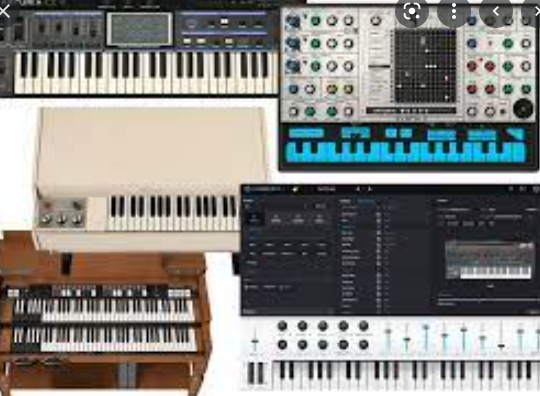Step-by-step tutorials with integrated step-by-step instructions are very instructive. Great sound quality, an extensive variety of timbres, as well as realistic reproductions that are faithful to the source. It’s true that the toy-like color design and the slider control might not be to everyone’s liking, However, the sound is fantastic. The MIDI tab is a way to access MIDI CC mapping and incorporates parameters and the ability to save and recall specific mapping settings.
Password 123
Arturia V Collection
Offering options such as speakers and amplifiers (including the authentic Leslie-type spinning effect) It’s hard to imagine not having the exact tone you’re looking for (having this huge collection of presets definitely does not hurt). Synthesizers became popular in the 1980s and the OBXa was at the forefront of it with its distinctive, fat, aggressive growl.
In terms of time-saving, the user manuals are integrated into every plug-in that is an important aspect. As usual for Arturia, they’ve increased the quality of their products with their most recent edition, V Collection 8. This collection contains 28 software tools as well as a variety of workflow enhancements and updates.
The 12 different voices can be assigned a distinct sound to any MIDI key range and channel which allows for hugely layered textures and intricate splits. These plug-ins and virtual instruments are made to integrate seamlessly into your system without any hassle. No matter what your preference you’ll be able to explore the sound and enjoy full compatibility with major DAWS, both macOS as well as Windows.
The simple to program Juno-6 was not just for enthusiasts or small club giggers. I can understand the technical reasoning for this but it’s still an important flaw. The first Moog included one, along with other popular vocoders, like the VP330 and VP330, which is why I believe that Arturia might want to consider reviving Vocoder V as an effects plug-in and in the form of an instrument. Another issue was the placement of the patches sockets for each band. Although they’re precise in relation to those of the Moog Vocoder’s location, they could be irritating due to the fact that when you connect cables to them they can obscure important controls. It may be prudent to compromise some artistic accuracy to increase users’ experience. But, Vocoder V was the new addition to V Collection 8 which was the most intriguing and enthralled me.
Arturia V Collection Features
Another modification to the workflow comes as a result of the Advanced as well as FX buttons which were added to the upper right corner of the display. For example, on Stage 73, there used to be an arrow that could open small additional controls (i.e. velocity curves, and effects) that were superimposed over the visual image of the Rhodes piano. Today, there are specific buttons that open specific screens for these functions, which is a great thing!

Some great digital vocoders made available in recent times, but this one could be quite unique. Before we get into the instruments I’d like to talk about something that, according to me, Arturia never got right in the past. In the early 2000s, it was the method used by the company to mimic the drift of analog oscillators using an undetermined offset to their initial phase when you played every note. If the synth you were playing utilized two oscillators per voice, the issues of this approach were twofold. First, if the oscillators are set to identical pitches, then each note’s tone could be drastically different from the following.
In one instance, engineers started speaking in low tones about the possibility of a new method to recreate the process that created a sound that was dubbed “physical modeling”. “Physical modeling” (or “Virtual Analog”) did not playback recordings of earlier recorded sounds It employed sophisticated DSP methods to recreate how sounds were made and processed.
How to get Arturia V Collection Free
I then lowered the levels for both the Synth and the voice to ensure there was no distortion and finally, I played around with the settings of the Bands and the levels to achieve the tone and formants I desired. Within a few minutes the results I achieved were awe-inspiring with female and male solos and choirs only one tweak away, and some of the finest cellos that I’ve ever synthesized. Of course, I didn’t stop at that point, and soon was getting a wide range of effects that range from symphony voice accompaniments to The Robots Of Doom. I also spent time looking into the factory sounds as they demonstrate how versatile Vocoder V can be.
Everything there is to enjoy about the Juno The thick pads, the lows that rumble, and the lead-free leads. It can do everything – even things that traditional instruments would never have thought of. This could be the only instrument that you’ll ever need. The final feature is an extensive section for modulation that includes LFO as well as Envelope Follower as well as an extensive multi-effects section with three modules.
Three variations were released and each one had stereo inputs, as well as MIDI in and through, however, there was you could choose between two and six audio outputs. In all cases, an additional audio output that was not legitimate was available, but plugging it into anything broke the sound system in my Mac. According to Arturia, the Voice Input section regulates the external signal from the track in a DAW or from an audio interface’s microphone input when it is in standalone mode. This means that currently, it isn’t possible to directly record a vocoded track in all DAWs.
Arturia V Collection System Requirements
- Memory (RAM): 1 GB of RAM required.
- Operating System: Windows XP/Vista/7/8/8.1/10.
- Processor: Intel Dual Core processor or later.
- Hard Disk Space: 7 GB of free space required.
